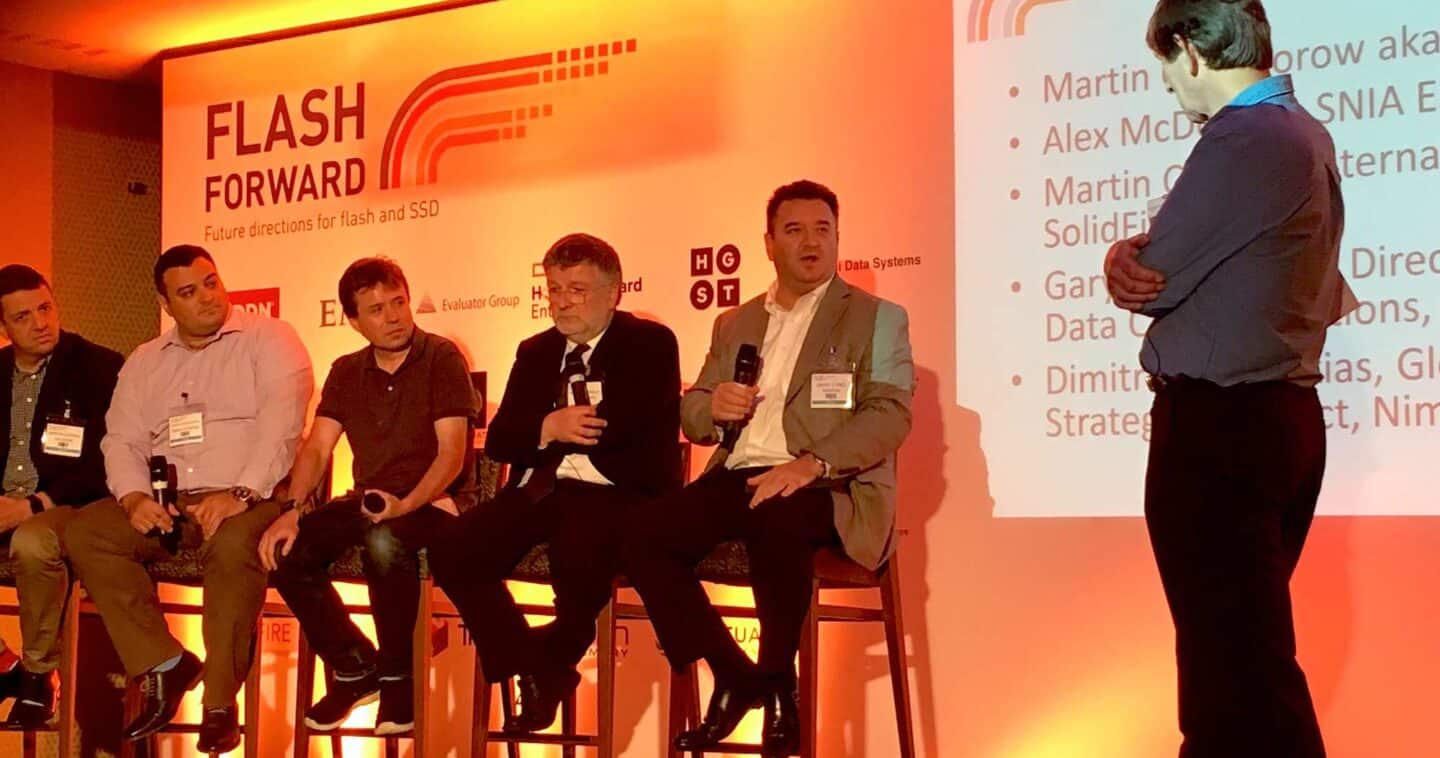Is Flash the Future? 11 Essential Truths from Flash Forward
Last week I had the chance to speak on a panel at the Flash Forward event in London. With so many analysts and vendors, I too was skeptic about how much of the discussion would actually go beyond the common ‘Flash is great. Flash is fast’ mantra.
But here’s the thing – for most of our time in technology, we had to choose the ‘least worst’ option. Now flash is changing everything. Admittedly, we have a difficult time articulating all of its benefits simply because the change is so encompassing. Mark Peters of ESG dexterously put it –we’re excited because data finally matters, and data is central to what we do. That’s why flash matters most.
Here are 11 key takeaways from the event:
1. Some New Trends Are Not So New At All
While some technologies are changing the landscape and opening up possibilities that never before existed, others feel more like a reincarnation of existing, familiar technologies. One speaker pointed out that hyper-converged technology is in fact the return of the mainframe and software-defined storage has been around since 1999. But don’t be fooled, flash brings changes that are very real and so are the benefits of the trends we’re seeing (new and old).
2. Flash Will Move To Archive
Some say it’s a matter of time, and I say it’s already happening. And what’s archive anyways? I think we need to find new definitions for this. Is Netflix archival? Either way, with 3D NAND, the TCO will point that way with all new densities and new economics.
3. It’s Time to Get Analytics!
If you’re not on board yet, here’s a forewarning – analytics is what is going to make or break a business. Carla Arend of IDC Europe made a fantastic point. Yes, predictive analytics will help us make business decisions that will be decisive. But we are also entering an era of understanding our customers in new ways, getting closer to them than ever before and we’re able to deliver personalized experiences that they truly value.
Here’s a great example that Alex MacDonald of SNIA brought up: Microsoft’s acquisition of LinkedIn. If you think about the number of users, Microsoft paid a hefty sum of $60 per user. But that’s not what they bought. What they bought was the connections between the users. This is where the gold mine lies, and they got it for a fraction of a penny.
[Tweet “Is flash the future? Here are 11 essential truths from #SSDFlashForward”]
4. Reliability is What Lets IT Managers Sleep at Night
People love talking about the speed of flash, for good reasons. But when it comes to real-world deployments, Peter Buschman of booking.com (an InfiniFlash™ System customer) summed it up like this: “I like storage so boring that I can sleep at night.”
Downtime is not only costly and bad publicity; it’s also extremely complicated to recover from when you’re talking about hundreds of servers. Booking.com has found flash so reliable that they are using SSDs in a RAID 0, getting even better densities and efficiencies.
5. It’s All About Workloads
With flash, suddenly, performance is no longer a barrier. And if everyone could afford it, I’m sure we’d be running everything on high-end flash. But since IT purchase decisions are always a conglomerate of considerations – capacity, scale, simplicity, budget, business needs, attitude, and of course, performance, there’s no one ‘best’ industry solution. It’s the workload characteristic and SLA that will dictate the discussion and customers know their needs best (we vendors had better listen).
6. Simplicity is Key
As capacity grows alongside cloud adoption and analytics, new workloads get into the mix. Everyone is looking for simplicity when trying to solve these new complex challenges. It was interesting to hear from Carla Arend of IDC that simplicity of management appeared in the list of top 5 data center challenges, while capacity didn’t. The reason is simple – everyone is throwing hardware at the capacity problem. But all that hardware brings on management woes. Here again is where flash can be a savior through massive consolidation.
7. Agility Requires New Deployment Models
Companies are looking for faster time to deployment. The traditional ways of acquiring infrastructure are taking too long, are too complicated, and require unreasonable forecasting of capacity and workload demands. It also means that DevOps is helping define new, faster methods for delivery. Vendor lock-in is about to be another thing of the past.
8. Data is Moving to the Edge
Our new world of mobile, cloud, social, big data, robotics, and IoT is creating a lot of data and consumers expect immediate response times. As such, all these next-gen type of applications are moving to the edge as it simply takes too long to get them to the data center. Certainly for the end user of such data, immediate gratification takes too long.
9. We Need to Better Educate About Flash
The benefits of flash and the radical transformation it brings is not widely understood. Unfortunately, most people view flash as another disk (for the brave: try saying this to Alex McDonald and see his reaction). But the truth couldn’t be farther from it – flash is a complete change in the way we do things. And it’s not just our thinking that needs to change, it’s also our applications. We need to engineer our applications differently for flash so we can maximize its benefits to the infrastructure, the applications, and most importantly the business that it supports.
10. New TCO Models
Randy Kerns of the Evaluator Group had a great answer to the dollar per gigabyte debate. If that’s all you’re concerned with “Well, why don’t you buy tape? “. What I like here is that it immediately brings the discussion back to the workload. This is not data at rest, this data needs to do something! Now we can discuss where flash can help it do so better, faster, more reliably, and more cost effectively than ever before.
11. More Change is Coming
We’re seeing the beginning of the end; the beginning of the end of traditional arrays and traditional storage mediums. But what’s even more exciting is what’s ahead. Non-volatile storage technology is only at the beginning of its evolution. Densities and speeds are continually multiplying and with it we’ll see new tiers, possibilities, applications and experiences we never thought possible.
If you still feel the hunger for more food for thought on the subject, I highly suggest you download Chris Mellor’s presentation ‘The War on Latency’ on the Flashforward.io website to see just why we’re all so feverish about what’s to come.




